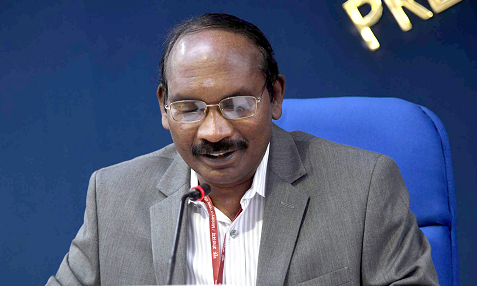Indian Space Research Organisation, ISRO plans a series of launches in the coming decade, culminating in setting up a space station on its own. While the space agency is immediately tied up with the launch of the second Moon Mission, it will send a manned mission to space in 2022, to coincide with India’s 75th Independence Day.
New Delhi (ISJ) – India’s space agency, Indian Space Research Organisation has announced plans to set up a space station on its own to conduct microgravity experiments. The station, tentatively planned to be launched in 2030 would have a payload of 20 tonnes. Announcing this in New Delhi on Thursday (June 13), K. Sivan, Chairman of ISRO said, it can accommodate astronauts upto 15-20 days. He however said, details of the mission would be finalised only after the maiden manned mission – Gaganyaan.
The 10,000 crore manned space mission, Gaganyaan is planned to be launched by the 75th Independent Day of India in 2022. Prime Minister Narendra Modi, during his 2018 Independence Day speech, had announced plans to send a manned spacecraft by 2022. India will be the fourth country to launch manned mission – Russia, US and China being the others.
Sivan said, selection of astronauts for the maiden manned mission is in progress and it will take six months for preliminary training and another one and a half years to two years for advanced training. While the preliminary training will be in India, the advanced training will be provided at a foreign facility. Sivan said, two unmanned trial flights will be launched by December 2021, before the manned flight. “Gaganyaan will stay in the space for 3-7 days in the Lower Earth Orbit (LEO) of 120-400 km,” he added. Gaganyaan will take 16 minutes to be launched into the orbit, while it will take 36 minutes for splash down, said the ISRO Chief.
Immediately, ISRO is focussed on its second Moon Mission – Chandrayaan-2, which will be launched on July 15. It will land near the South Pole, where no other country has attempted to land.
The mission is expected to help in analysis of mineral composition and undertake terrain mapping of the moon. It will be the first Indian expedition to attempt soft landing on the lunar surface with home-grown technology.
“ISRO has never undertaken such complex flight,” Sivan had said in Bengaluru on Wednesday (June 12). Chandrayaan-2 has three modules namely Orbiter, Lander (Vikram) and Rover (Pragyan). The Orbiter and Lander modules will be interfaced mechanically and stacked together as an integrated module and accommodated inside the GSLV MK-III launch vehicle. The Rover is housed inside the Lander.
GSLV Mark-III is India’s most powerful launcher to date and has been completely designed and fabricated indigenously.
ISRO also unveiled its plans for a solar mission Aditya L1, scheduled for launch in 2020. This would aim to study Sun’s Corona and its impact on climatic changes, besides a mission to Venus with a tentative launch date in 2023 to study the atmosphere and surface topography of Venus.


